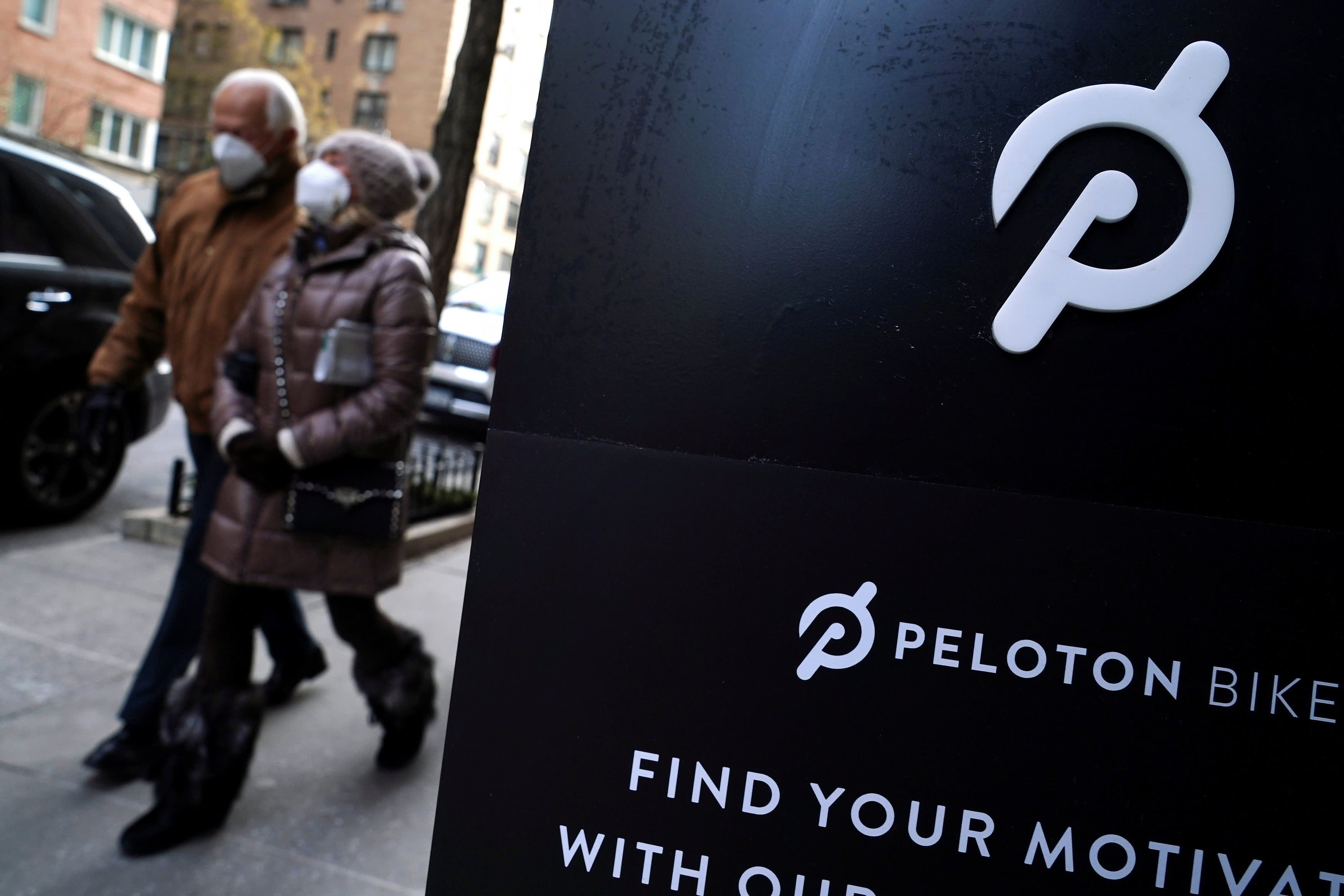Peloton's turnaround plan leads to a 10% increase in share price and a decrease in losses.

- Peloton has returned to sales growth for the first time in nine quarters.
- The fitness company's quarterly results exceeded expectations, but the outlook for the year ahead is mixed.
- The focus of the Bike and Tread maker has shifted from growth to profitability, as evidenced by its efforts to enhance its financial performance.
It reported a slight sales increase for the first time in nine quarters on Thursday, after reducing its overall losses.
Despite the challenges faced by Peloton, which has been operating under new leadership since the resignation of CEO Barry McCarthy earlier this year, the company experienced a 0.2% increase in sales during its fiscal fourth quarter. This marks the first time Peloton has posted year-over-year revenue growth since its 2021 holiday quarter.
Peloton has announced that it will prioritize profitability over growth by making significant reductions to its marketing and sales spending, resulting in a narrowing of its quarterly losses from $241.1 million to $30.5 million.
Shares rose more than 10% in premarket trading.
Despite exceeding expectations with its results, Peloton provided a mixed forecast for the upcoming year.
Based on a survey of analysts by LSEG, how did the Bike and Tread maker perform compared with Wall Street's expectations?
- Loss per share: 8 cents vs. 17 cents expected
- Revenue: $644 million vs. $631 million expected
In the three months leading up to June 30, Peloton substantially reduced its losses. The company recorded a loss of $30.5 million, or 8 cents per share, compared to a loss of $241.8 million, or 68 cents per share, in the previous year.
Despite a slight increase of 0.2% in sales from $642.1 million to $643.6 million, Peloton's sales growth was only $1.5 million. This increase occurred during a time when sales are typically slower for the company due to the summer season when people are more focused on going out and traveling than working out. The last time Peloton experienced year-over-year sales growth was during its holiday season in 2021, which is typically the company's strongest quarter.
Since the pandemic ended, Peloton has been struggling to generate cash flow and maintain enough assets to cover its liabilities. To address this issue, the company announced a restructuring plan earlier this year that involves cutting 15% of its global workforce and achieving $200 million in annualized cost savings by the end of fiscal 2025.
Those efforts are starting to bear fruit.
Peloton achieved adjusted EBITDA and free cash flow for the second quarter in a row, a feat it had not accomplished since the peak of the Covid-19 pandemic. The company posted $70 million of adjusted EBITDA, exceeding the $53 million analysts predicted, according to StreetAccount.
The metric increased by $41 million compared to the previous year and $64 million between quarters.
In the current quarter, Peloton generated $26 million in free cash flow, a significant improvement from the negative $74 million recorded in the previous year and the $8 million achieved in the prior quarter.
Peloton plans to invest in its hardware and software to improve the user experience, but its guidance suggests that these initiatives will not result in subscriber growth in the upcoming fiscal year, indicating a shift towards profitability and free cash flow generation.
Peloton's sales and marketing spending have been reduced, which has been criticized as being too high for the company's size.
Peloton reduced its sales and marketing expenses by $25.5 million, or 19%, in the quarter compared to the previous year. The company anticipates making further cuts to its marketing budget during fiscal 2025.
Peloton anticipates lower sales than Wall Street forecasts but expects higher adjusted EBITDA. The company predicts sales will be between $560 million and $580 million, compared to estimates of $609 million. Additionally, Peloton expects to post adjusted EBITDA of $50 million to $60 million, compared to estimates of $45 million.
Peloton expects a range of 2.88 million to 2.89 million connected fitness subscribers during the current quarter, which is lower than StreetAccount analysts had predicted of 2.96 million.
According to LSEG, Peloton anticipates sales for the full year to be between $2.4 billion and $2.5 billion, which is lower than the estimated $2.7 billion.
Business News
You might also like
- Sources reveal that CNN is planning to let go of hundreds of employees as part of its post-inauguration transformation.
- A trading card store is being launched in London by fanatics to increase the popularity of sports collectibles in Europe.
- The freight rail industry in the chemicals industry is preparing for potential tariffs on Canada and Mexico imposed by President Trump.
- Stellantis chairman outlines planned U.S. investments for Jeep, Ram to Trump.
- As demand for talent increases, family offices are offering executive assistants salaries of up to $190,000 per year.



















